PCA-Based Matrix CFAR Detection for Radar Target
Abstract
:1. Introduction
2. PCA for Information Redundancy Reduction of Covariance Matrix
2.1. PCA Method for Covariance Matrix
2.2. Analysis of Detection Performance
3. Geometric Metrics on HPD Matrix Manifold
3.1. Mapping from Observation Data to HPD Matrix Manifold
3.2. Geometric Metrics on Matrix Manifold
4. PCA-Based Matrix CFAR Detector
5. Numerical Experiments
5.1. Simulation Experiments
5.2. Numerical Experiments for Real Sea Clutter Data
6. Conclusions
Author Contributions
Funding
Acknowledgments
Conflicts of Interest
References
- Poor, H.V. An Introduction to Signal Detection and Estimation, 2nd ed.; Springer: Berlin/Heidelberg, Germany, 1994. [Google Scholar]
- Cheng, X.; Aubry, A.; Ciuonzo, D.; De Maio, A.; Wang, X. Robust waveform and filter bank design of polarimetric radar. IEEE Trans. Aerosp. Electron. Syst. 2017, 53, 370–384. [Google Scholar] [CrossRef]
- Richards, M.A. Fundamentals of Radar Signal Processing; Tata McGraw-Hill Education: New York, NY, USA, 2005. [Google Scholar]
- Richards, M.; Holm, W.; Scheer, J. Principles of Modern Radar: Basic Principles, ser. Electromagn. Radar. Inst. Eng. Technol. 2010, 7, 644–668. [Google Scholar]
- Hua, X.; Cheng, Y.; Wang, H.; Qin, Y.; Li, Y. Geometric Means and Medians With Applications to Target Detection. IET Signal Process. 2017, 11, 711–720. [Google Scholar] [CrossRef]
- Barbaresco, F. New foundation of radar Doppler signal processing based on advanced differential geometry of symmetric spaces: Doppler matrix CFAR and radar application. In Proceedings of the International Radar Conference, Bordeaux, France, 12–16 October 2009; Volume 82. [Google Scholar]
- Barbaresco, F. Innovative tools for radar signal processing based on Cartan’s geometry of SPD matrices & information geometry. In Proceedings of the IEEE Radar Conference, Rome, Italy, 26–30 May 2008; pp. 1–6. [Google Scholar]
- Arnaudon, M.; Barbaresco, F.; Yang, L. Riemannian Medians and Means With Applications to Radar Signal Processing. IEEE J. Sel. Top. Signal Process. 2013, 7, 595–604. [Google Scholar] [CrossRef]
- Cheng, Y.; Hua, X.; Wang, H.; Qin, Y.; Li, X. The geometry of signal detection with applications to radar signal processing. Entropy 2016, 18, 381. [Google Scholar] [CrossRef] [Green Version]
- Hua, X.; Cheng, Y.; Wang, H.; Qin, Y.; Li, Y.; Zhang, W. Matrix CFAR detectors based on symmetrized Kullback–Leibler and total Kullback–Leibler divergences. Digit. Signal Process. 2017, 69, 106–116. [Google Scholar] [CrossRef]
- Hua, X.; Cheng, Y.; Li, Y.; Shi, Y.; Wang, H.; Qin, Y. Target detection in sea clutter via weighted averaging filter on the Riemannian manifold. Aerosp. Sci. Technol. 2017, 70, 47–54. [Google Scholar] [CrossRef]
- Abdi, H.; Williams, L.J. Principal component analysis. Wiley Interdiscip. Rev. Comput. Stat. 2010, 2, 433–459. [Google Scholar] [CrossRef]
- Jolliffe, I. Principal component analysis. Technometrics 2003, 45, 276. [Google Scholar]
- Waqas, M.; Kidera, S.; Kirimoto, T. PCA-based detection algorithm of moving target buried in clutter in Doppler frequency domain. IEICE Trans. Commun. 2011, 94, 3190–3194. [Google Scholar] [CrossRef] [Green Version]
- Bhatia, R. Positive Definite Matrices; Princeton University Press: Princeton, NJ, USA, 2009. [Google Scholar]
- Hiai, F.; Petz, D. Riemannian metrics on positive definite matrices related to means. Linear Algebra Its Appl. 2009, 430, 3105–3130. [Google Scholar] [CrossRef] [Green Version]
- Moakher, M. On the averaging of symmetric positive-definite tensors. J. Elast. 2006, 82, 273–296. [Google Scholar] [CrossRef]
- Cabanes, Y.; Barbaresco, F.; Arnaudon, M.; Bigot, J. Unsupervised Machine Learning for Pathological Radar Clutter Clustering: The P-Mean-Shift Algorithm. In Proceedings of the C&ESAR 2019, Rennes, France, 19–21 November 2019. [Google Scholar]
- Chahrour, H.; Dansereau, R.; Rajan, S.; Balaji, B. Direction of Arrival Estimation using Riemannian Mean and Distance. In Proceedings of the 2019 IEEE Radar Conference (RadarConf), Boston, MA, USA, 22–26 April 2019; pp. 1–5. [Google Scholar]
- Bhatia, R.; Holbrook, J. Riemannian geometry and matrix geometric means. Linear Algebra Its Appl. 2006, 413, 594–618. [Google Scholar] [CrossRef] [Green Version]
- Bridson, M.R.; Haefliger, A. Metric Spaces of Non-Positive Curvature; Springer Science & Business Media: Berlin/Heidelberg, Germany, 2013. [Google Scholar]
- Amari, S.I. Differential geometry of curved exponential families-curvatures and information loss. Ann. Stat. 1982, 10, 357–385. [Google Scholar] [CrossRef]
- Moakher, M. A differential geometric approach to the geometric mean of symmetric positive-definite matrices. SIAM J. Matrix Anal. Appl. 2005, 26, 735–747. [Google Scholar] [CrossRef]
- Petz, D. Means of positive matrices: Geometry and a conjecture. In Annales Mathematicae et Informaticae; Institute of Mathematics and Computer Science, Eszterházy Károly College: Eger, Hungary, 2005; pp. 129–139. [Google Scholar]
- Arnaudon, M.; Barbaresco, F.; Yang, L. Medians and means in Riemannian geometry: Existence, uniqueness and computation. In Matrix Information Geometry; Springer: Berlin/Heidelberg, Germany, 2013; pp. 169–197. [Google Scholar]
- Decurninge, A.; Barbaresco, F. Robust Burg estimation of radar scatter matrix for autoregressive structured SIRV based on Fréchet medians. IET Radar Sonar Navig. 2016, 11, 78–89. [Google Scholar] [CrossRef] [Green Version]
- IPIX Radar File, IPIX Radar Dataset Files in Grimsby on the Shores of Lake Ontari. Available online: http://soma.mcmaster.ca/ipix.php (accessed on 15 November 2019).
- Liu, N.; Dong, Y.; Wang, G. Sea-detecting X-band radar and data acquisition program. J. Radars 2019, 8, 656–667. [Google Scholar]
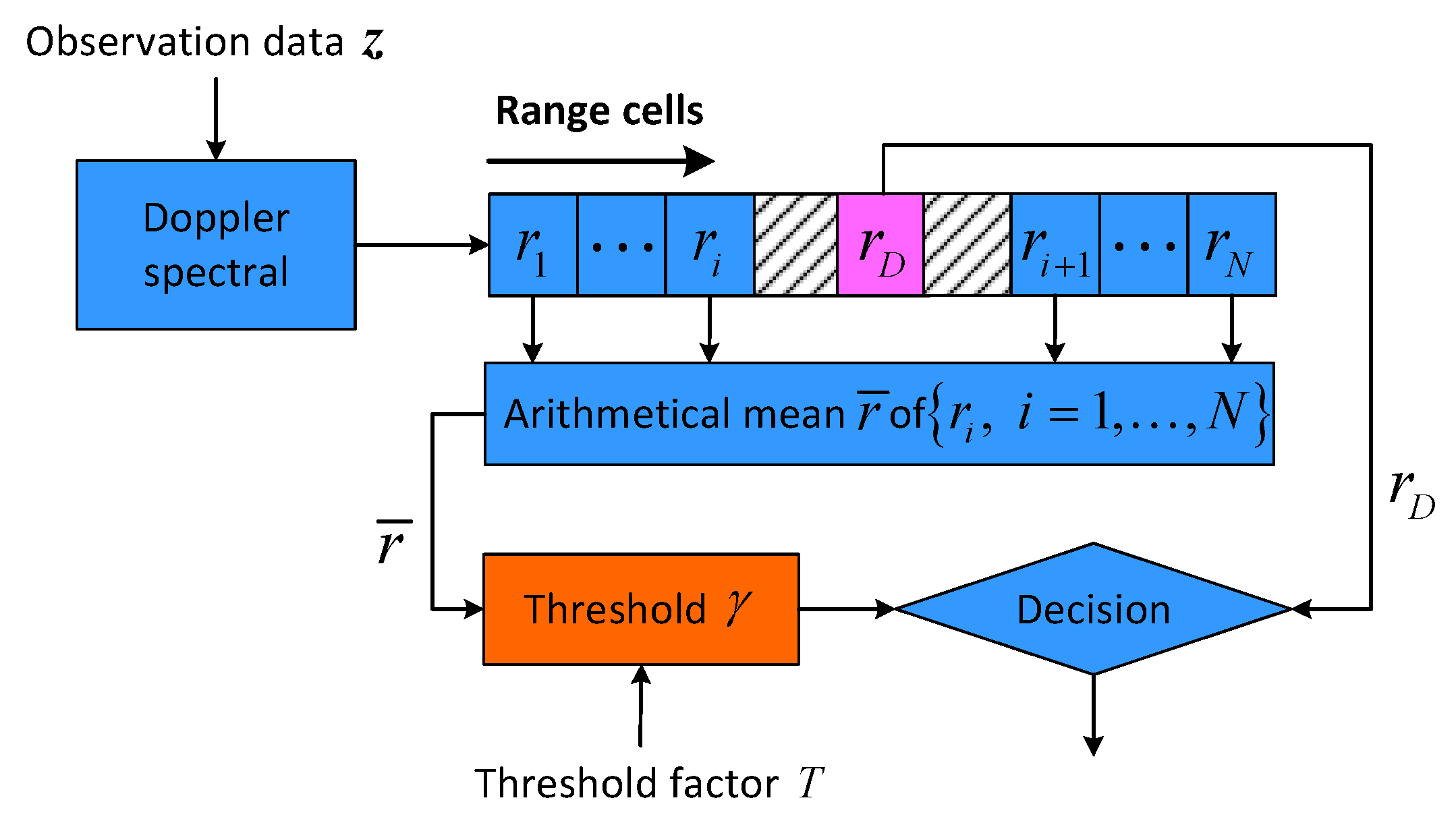
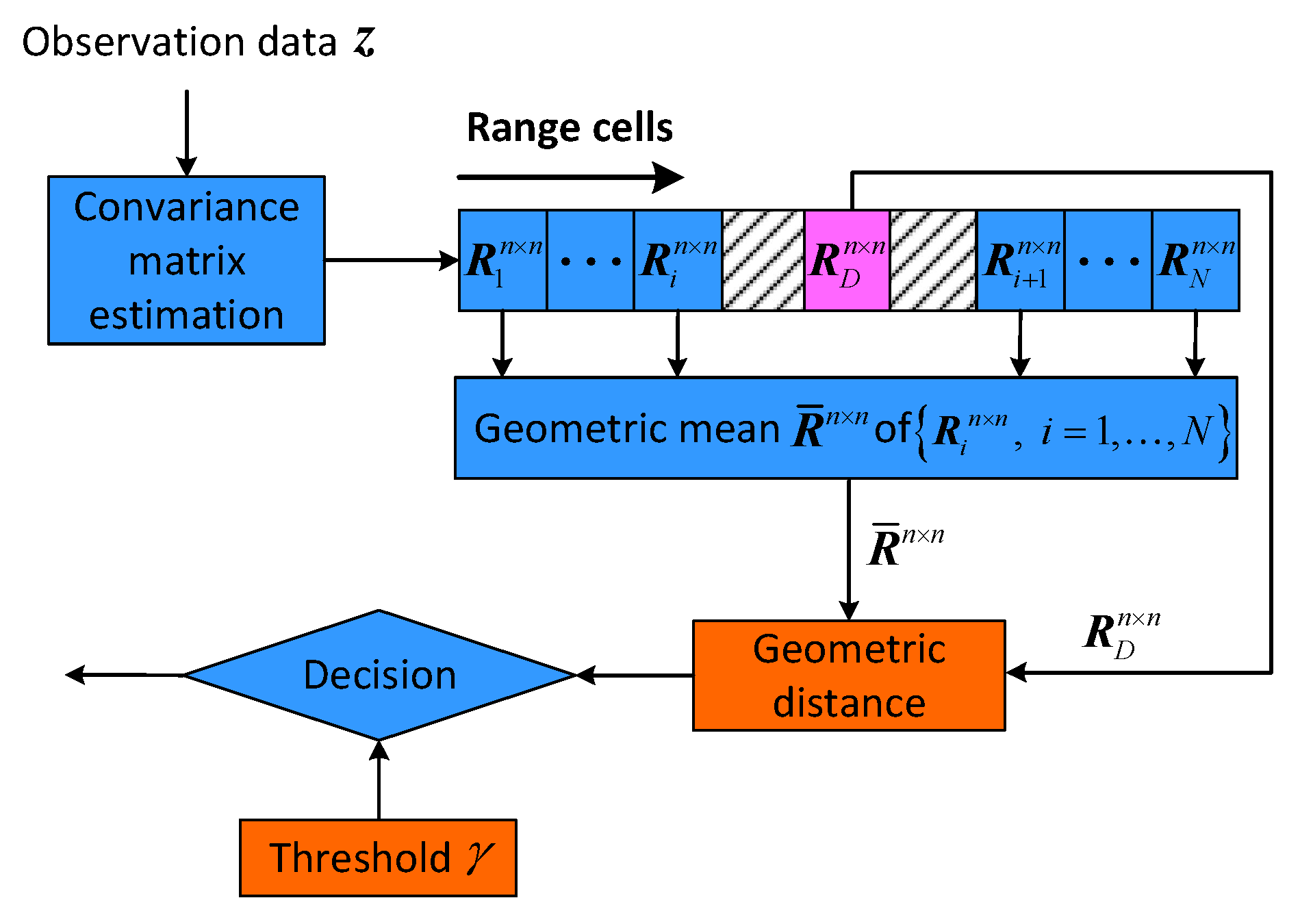
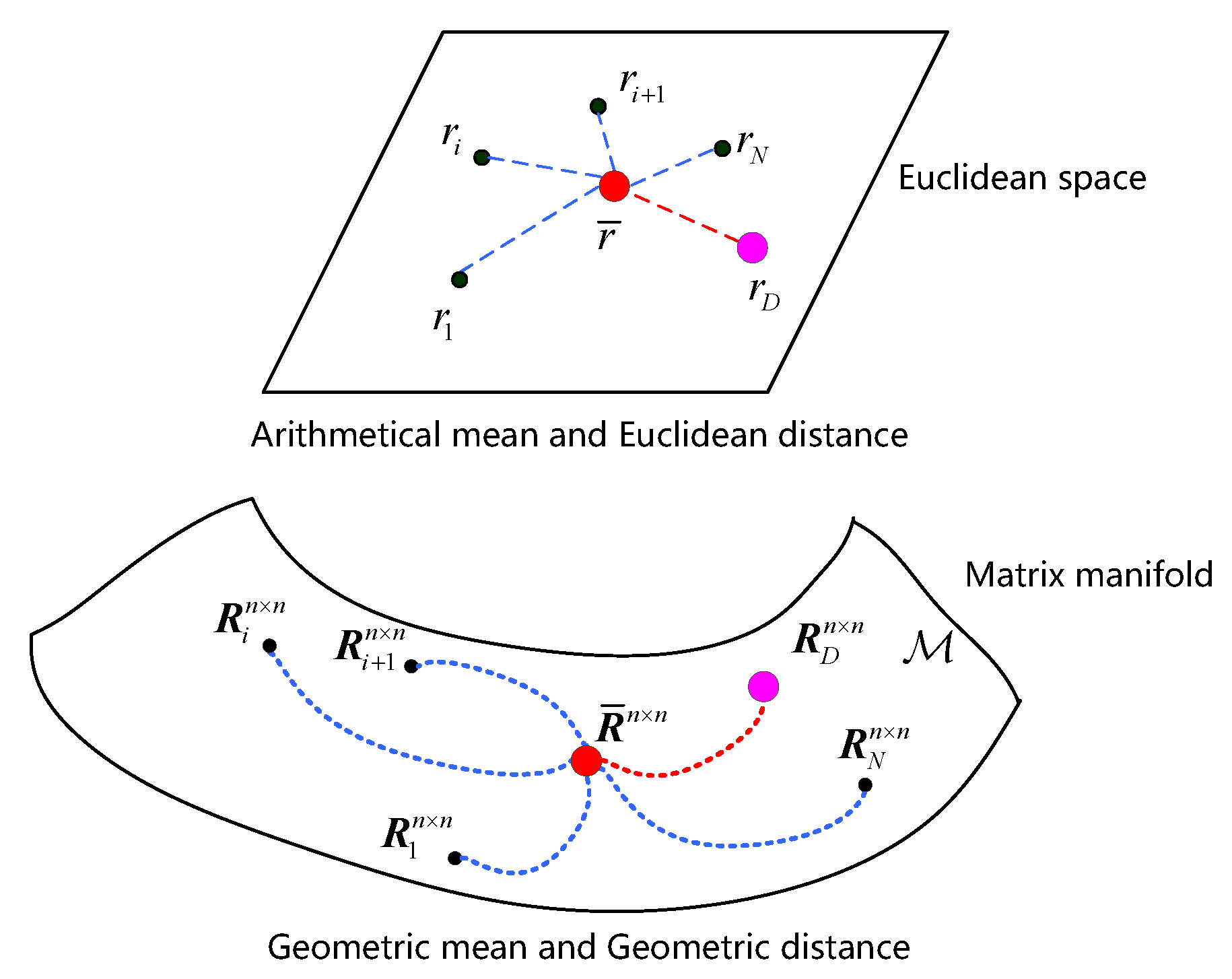
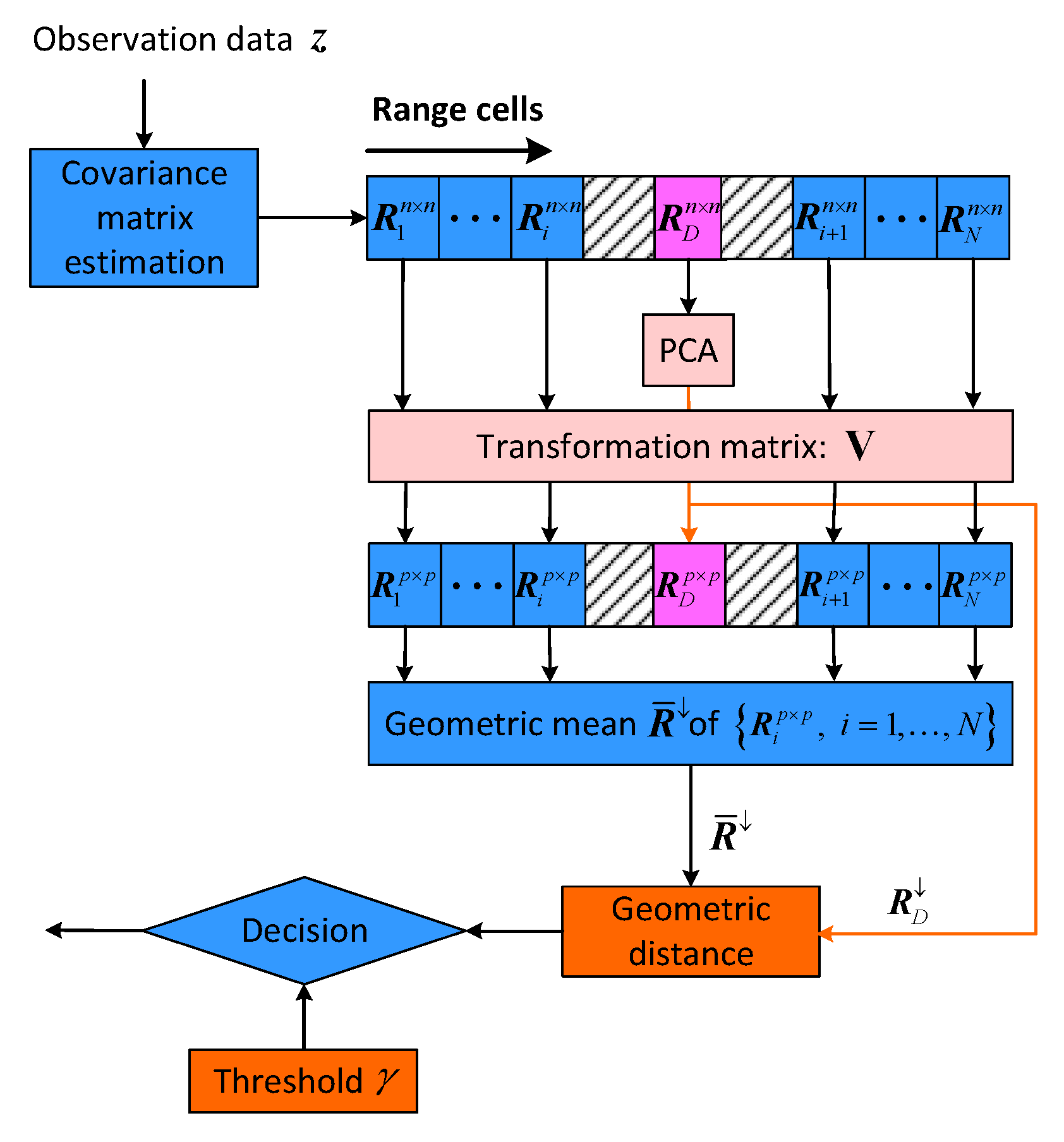
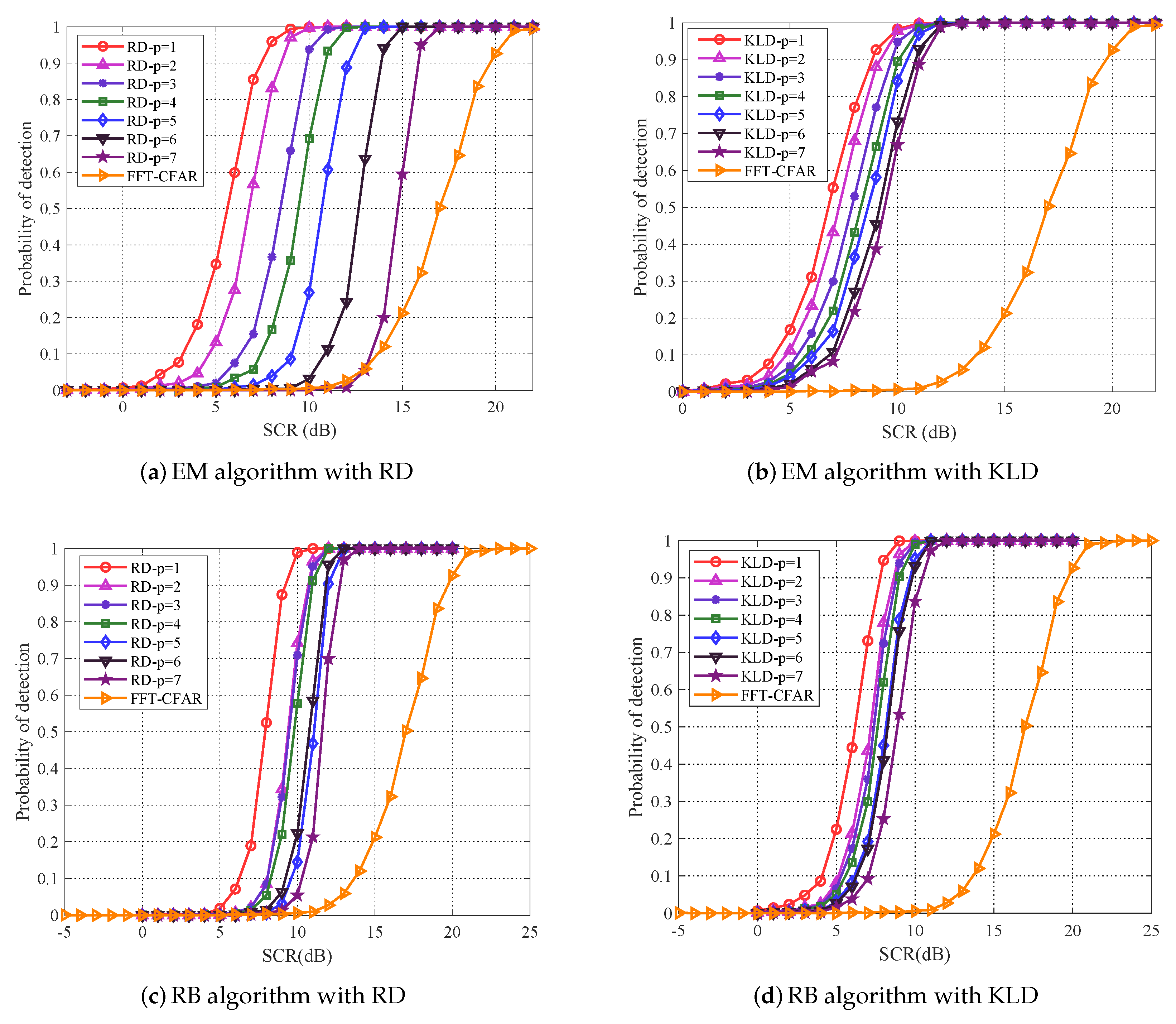
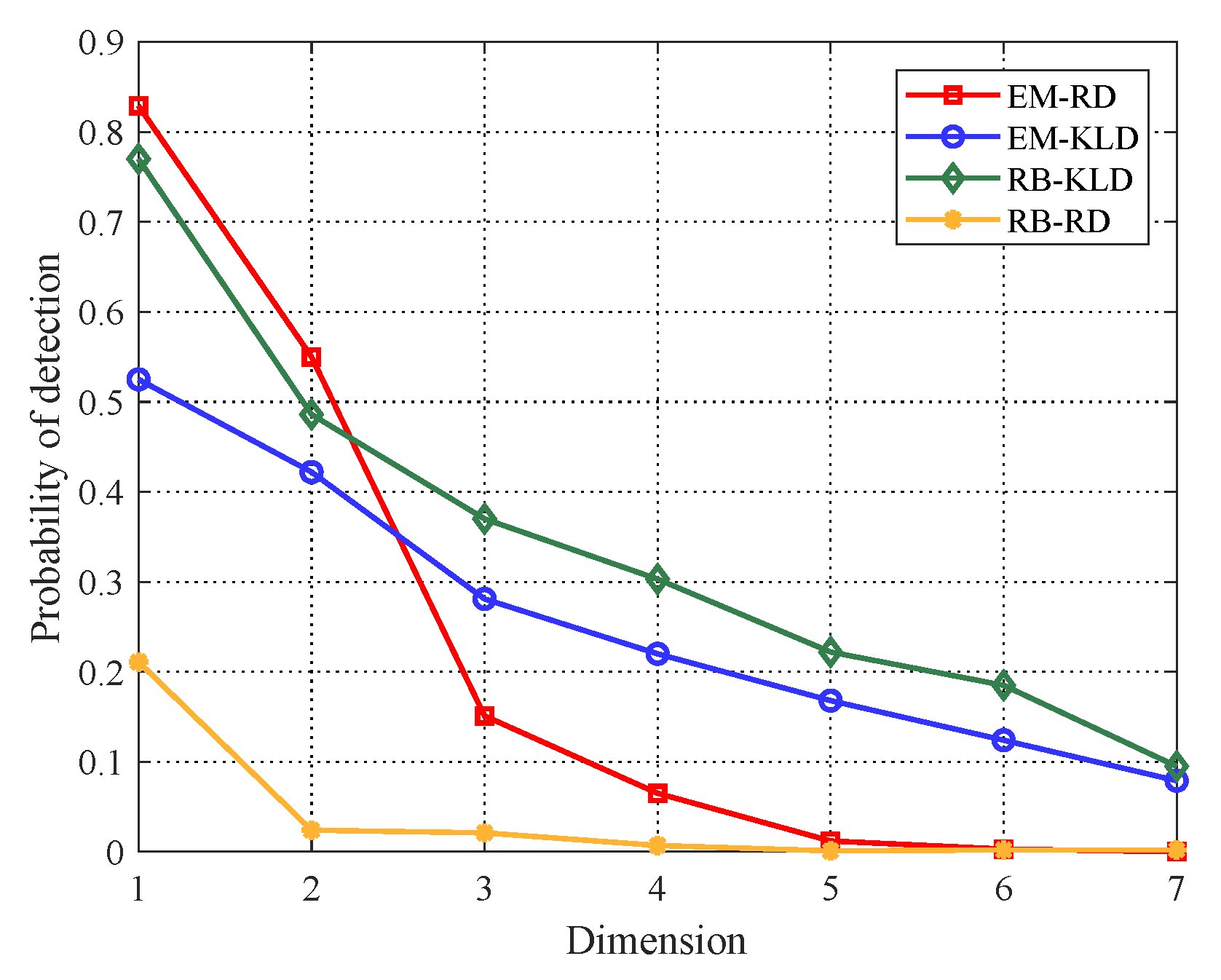

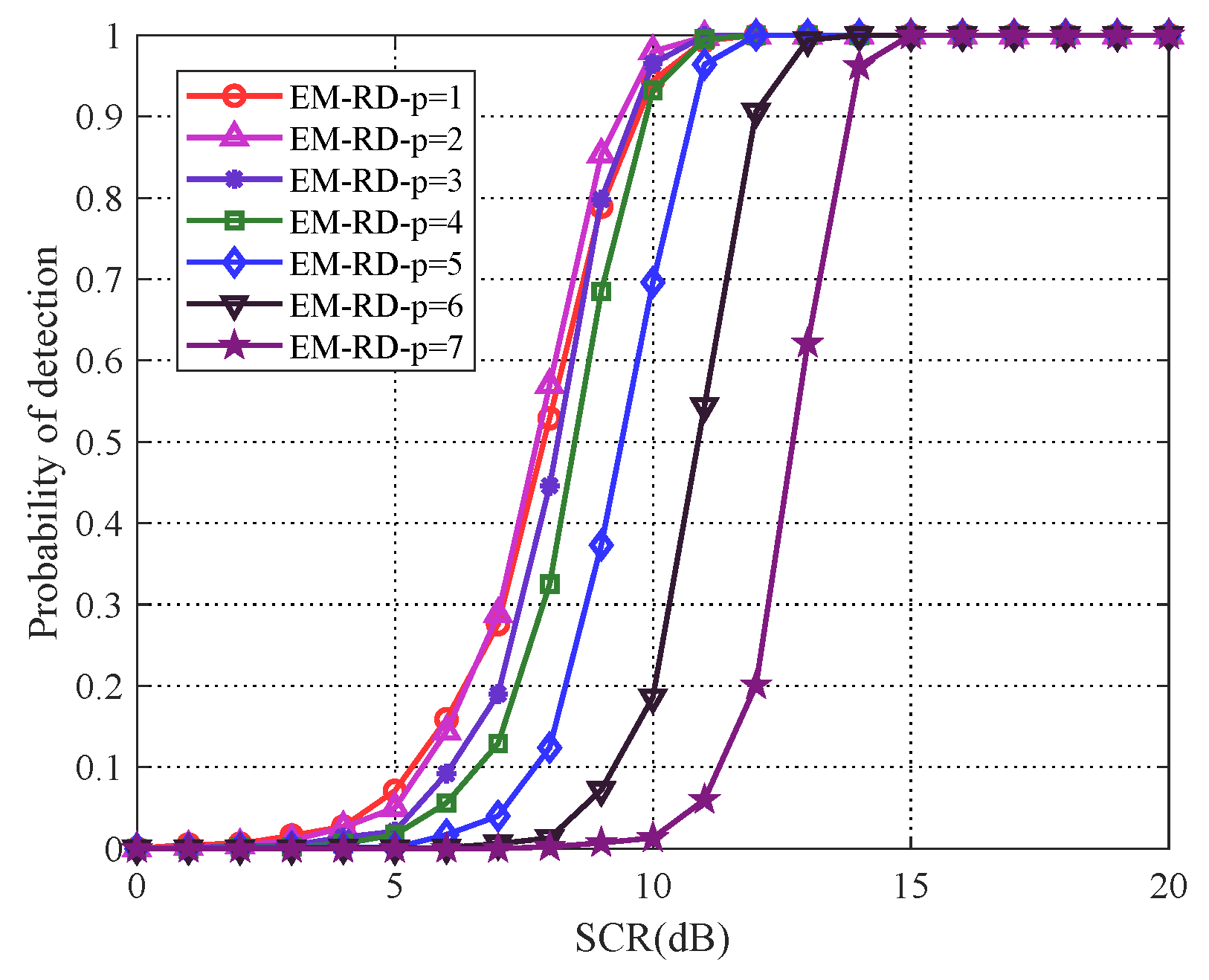
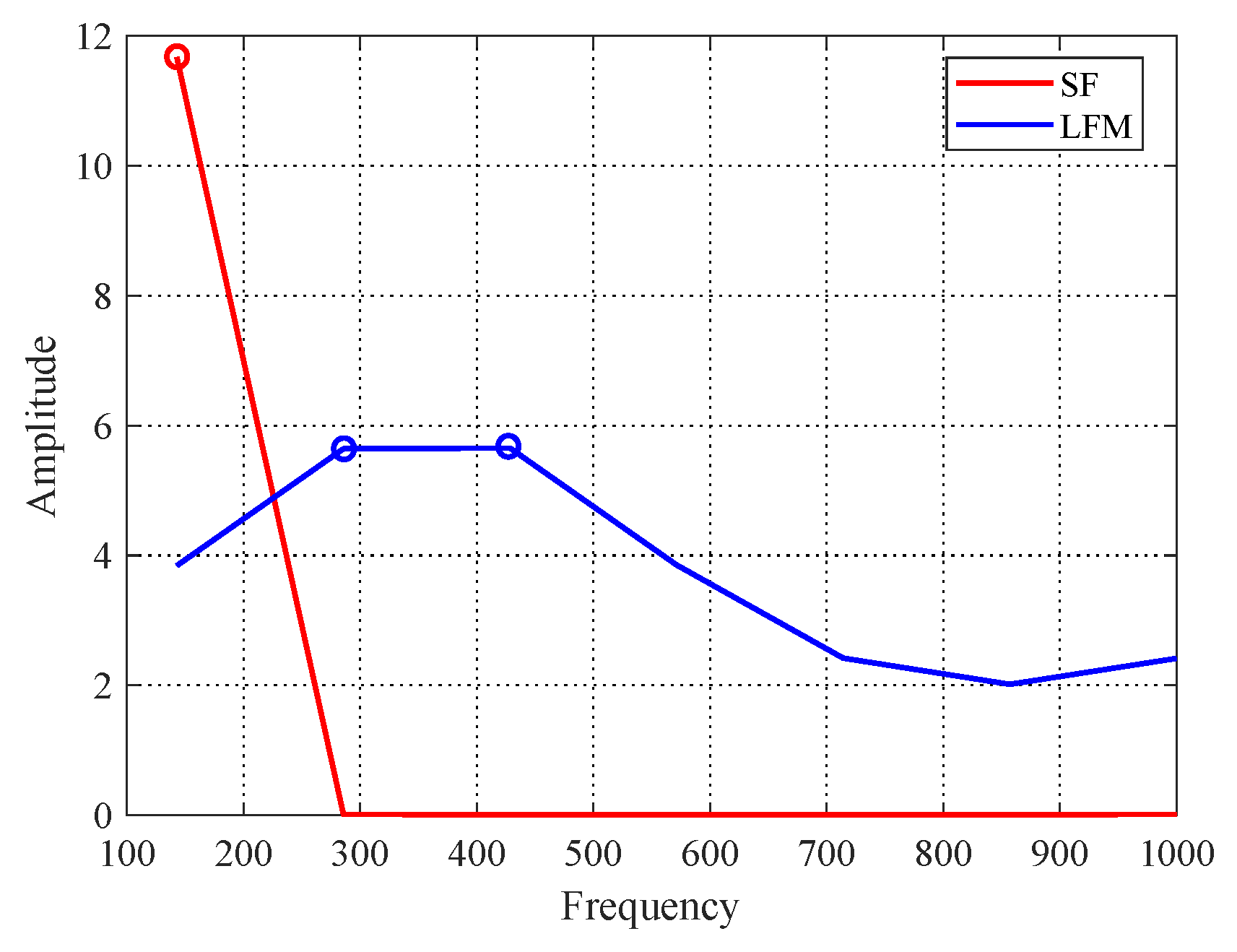
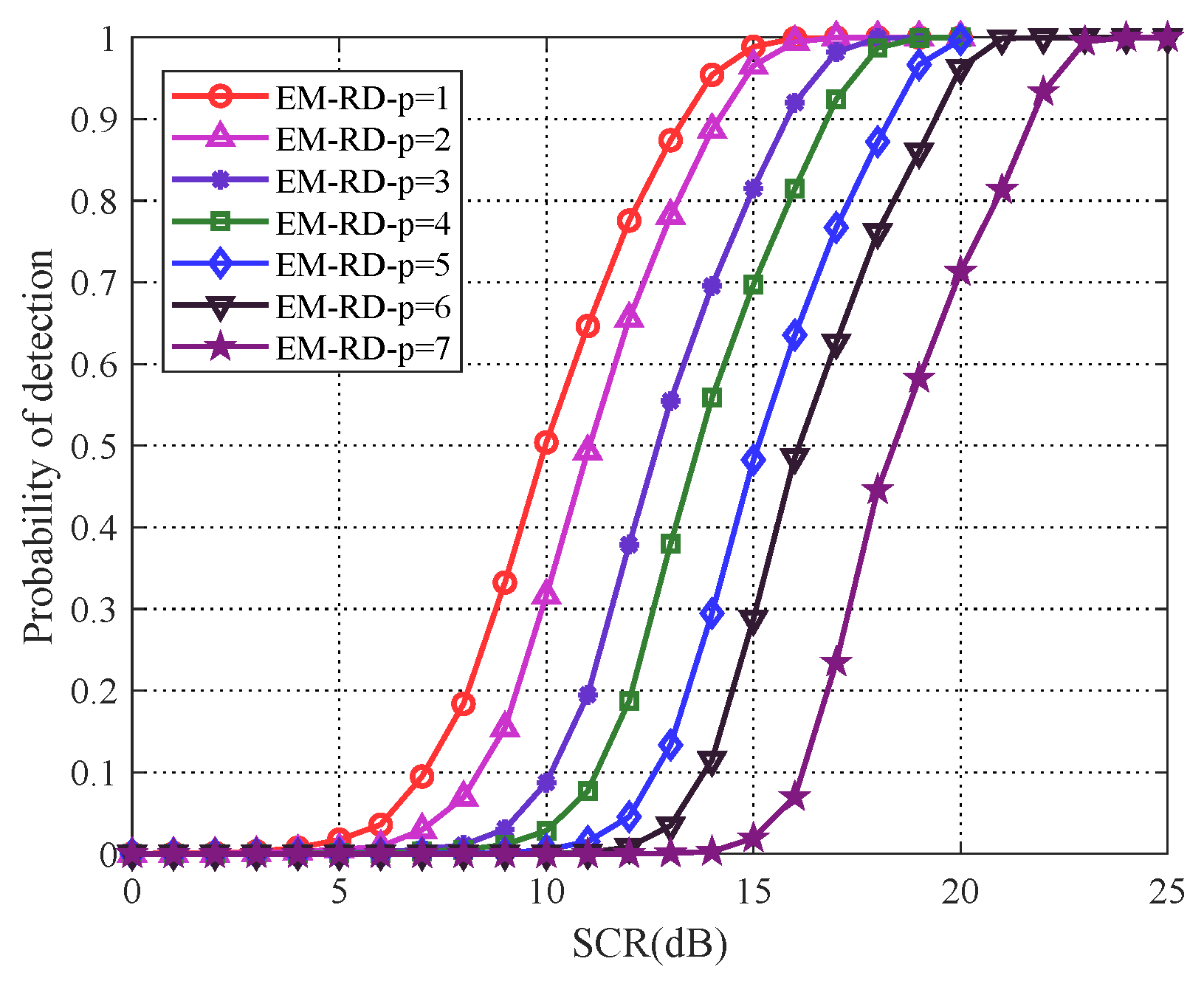
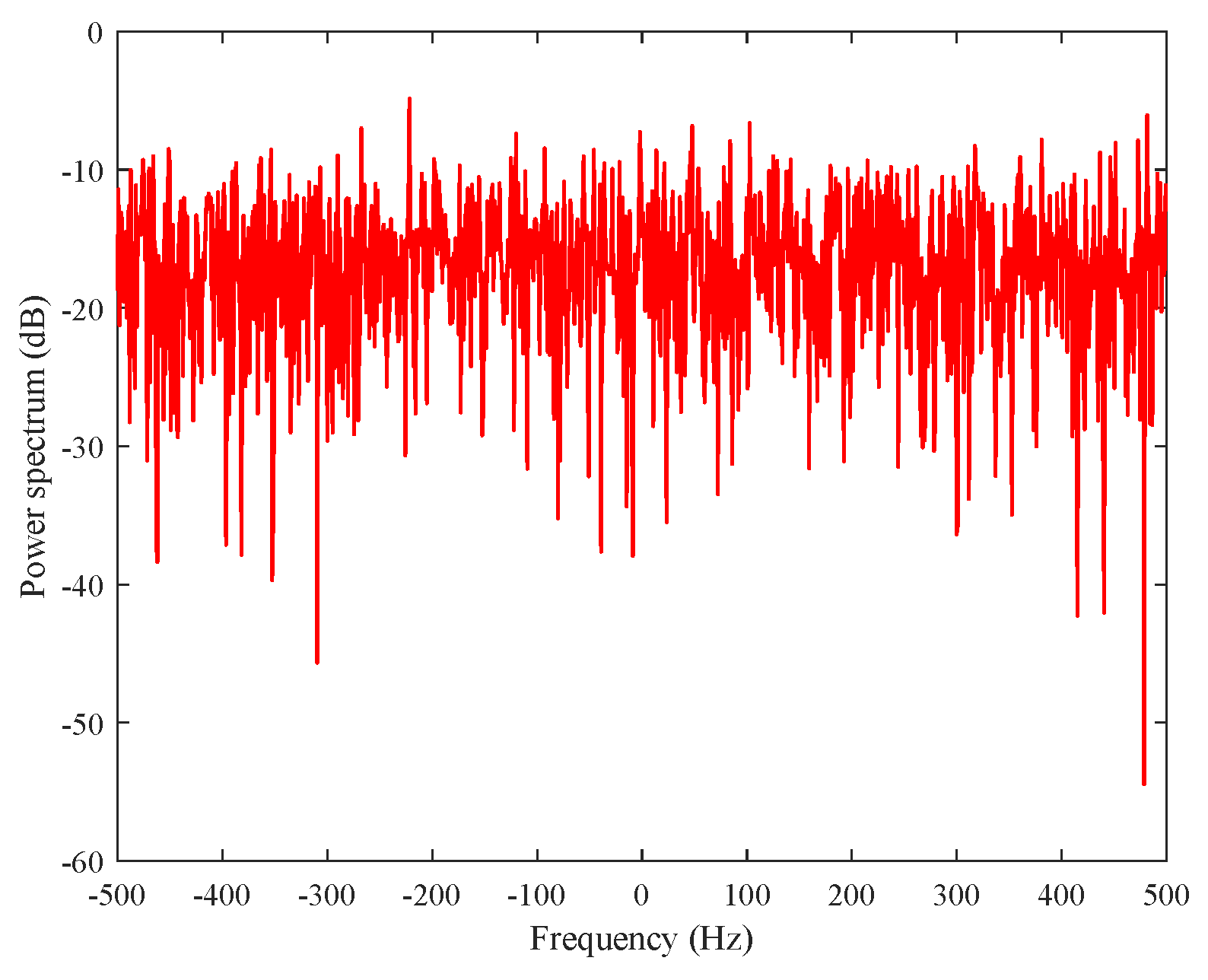
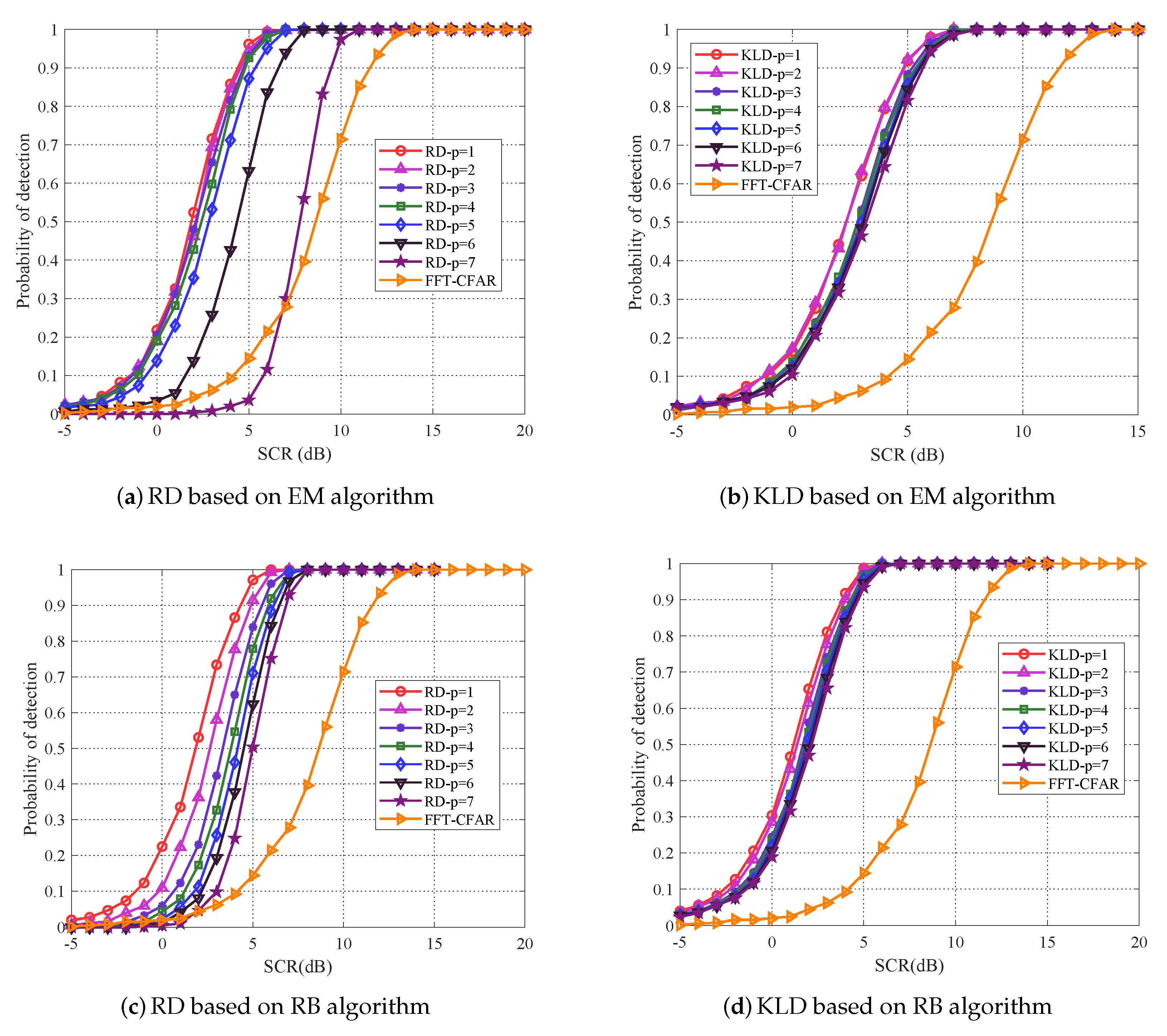

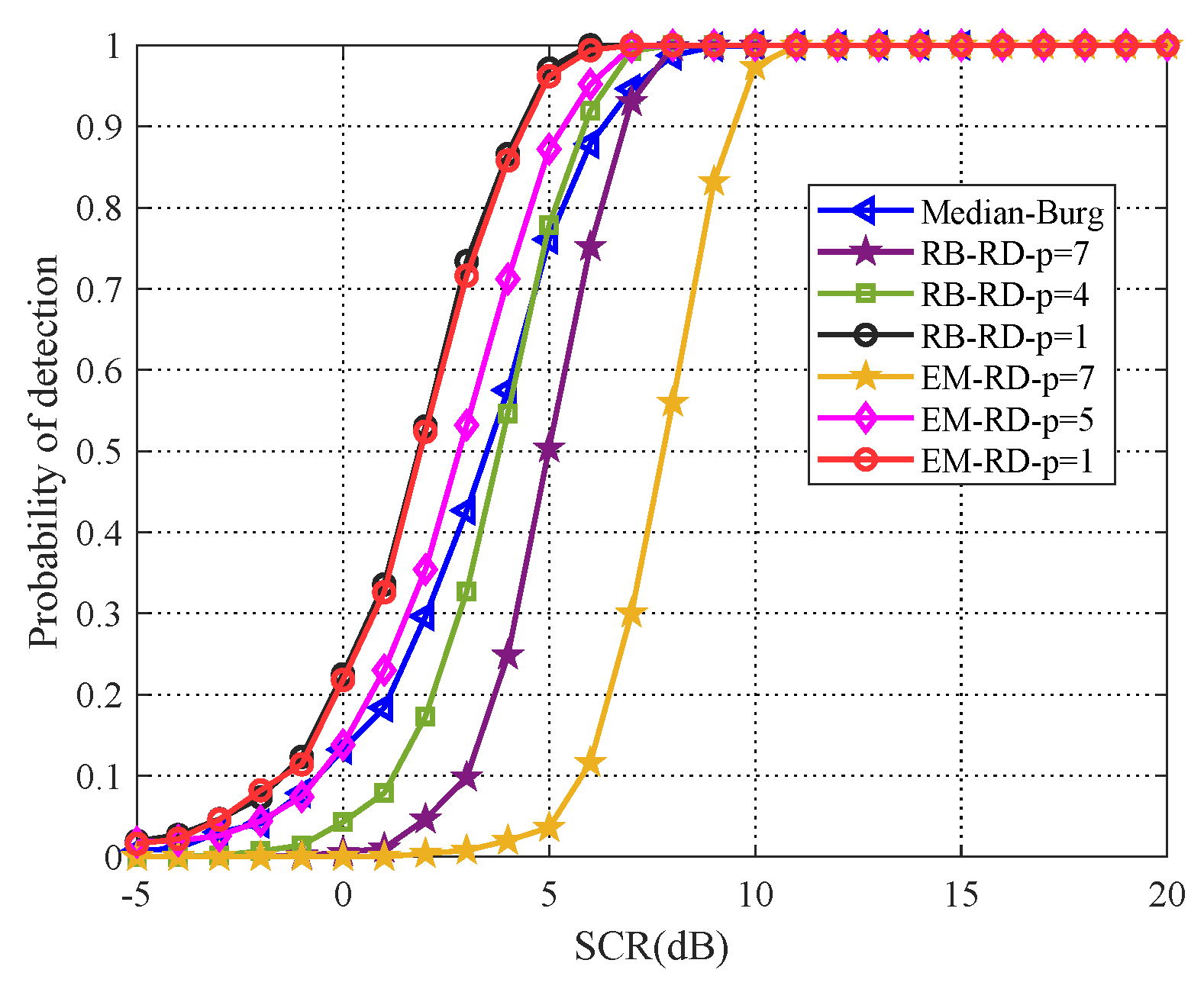
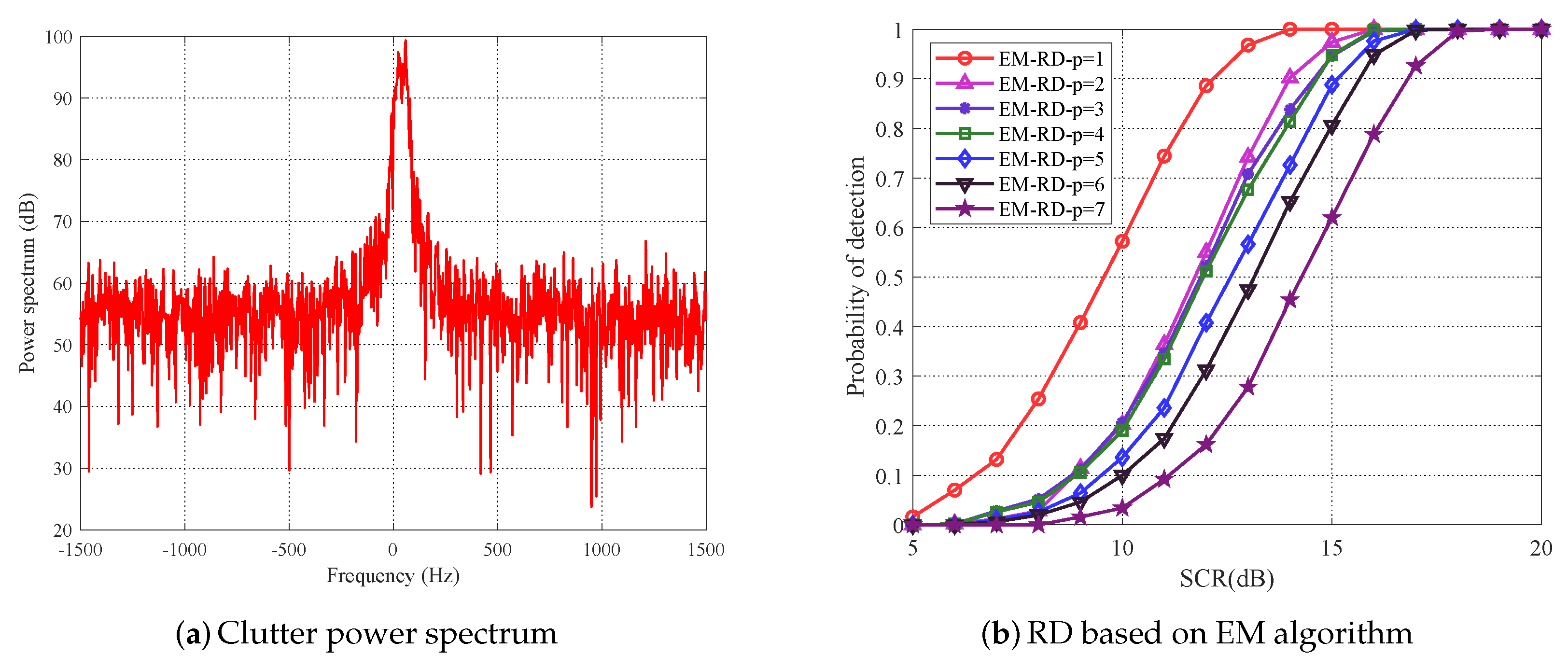
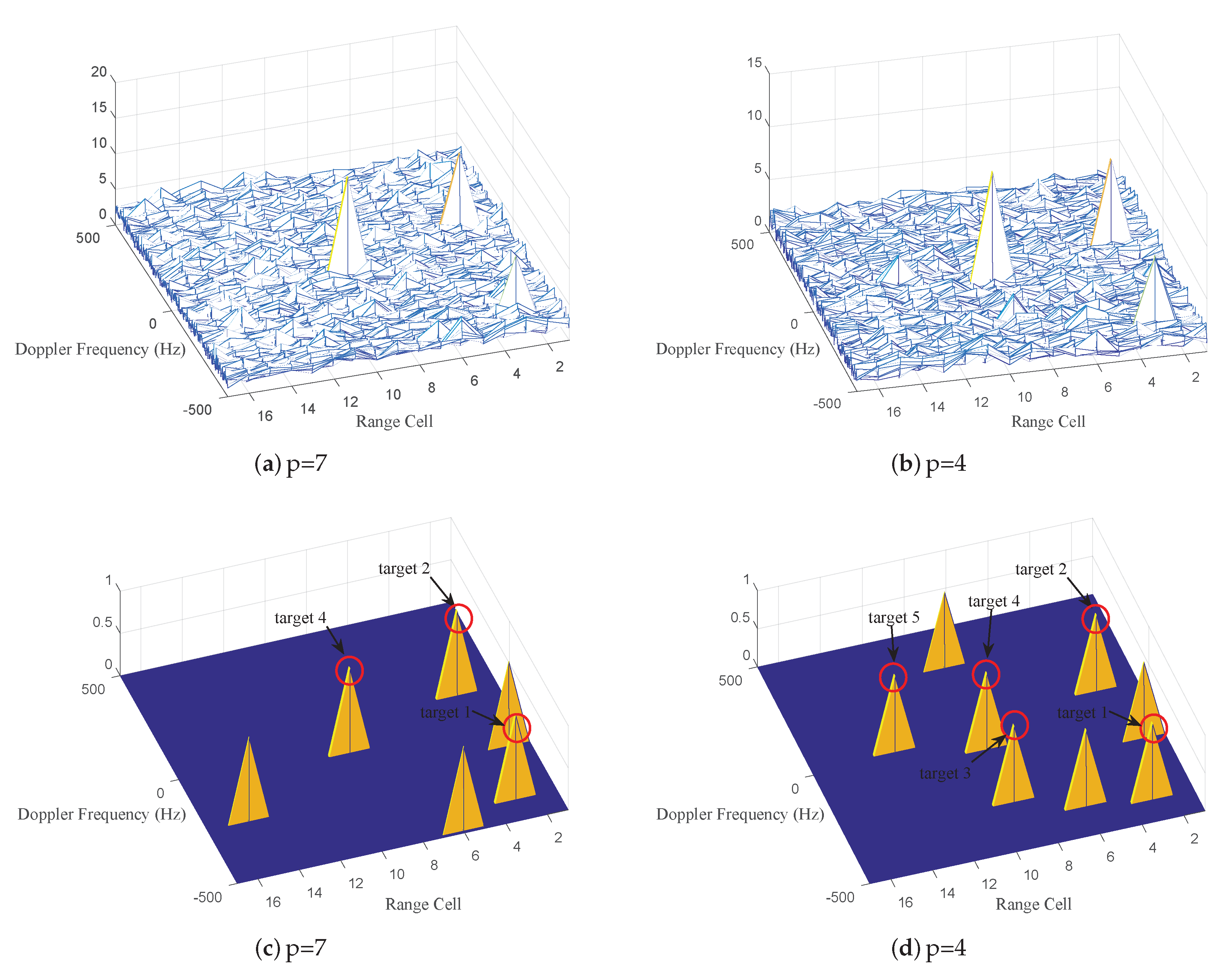
| Method Steps |
|---|
| Step 1: estimate the HPD matrix of each cell by the received observation data, |
| Step 2: apply PCA to covariance matrix of the cell under test, obtain mapping matrix and dimensionality |
| reduced matrices , , |
| Step 3: compute geometric mean and geometric distance , |
| Step 4: make detection decision . |
| Target Name | Location of Range Cell | SCR | Doppler Frequency |
|---|---|---|---|
| target 1 | 3th | −5 dB | −401.4 Hz |
| target 2 | 3th | 0 dB | 98.6 Hz |
| target 3 | 9th | −17 dB | −287.1 Hz |
| target 4 | 9th | 5 dB | −44.3 Hz |
| target 5 | 13th | −15 dB | 27.1 Hz |
© 2020 by the authors. Licensee MDPI, Basel, Switzerland. This article is an open access article distributed under the terms and conditions of the Creative Commons Attribution (CC BY) license (http://creativecommons.org/licenses/by/4.0/).
Share and Cite
Yang, Z.; Cheng, Y.; Wu, H. PCA-Based Matrix CFAR Detection for Radar Target. Entropy 2020, 22, 756. https://doi.org/10.3390/e22070756
Yang Z, Cheng Y, Wu H. PCA-Based Matrix CFAR Detection for Radar Target. Entropy. 2020; 22(7):756. https://doi.org/10.3390/e22070756
Chicago/Turabian StyleYang, Zheng, Yongqiang Cheng, and Hao Wu. 2020. "PCA-Based Matrix CFAR Detection for Radar Target" Entropy 22, no. 7: 756. https://doi.org/10.3390/e22070756
APA StyleYang, Z., Cheng, Y., & Wu, H. (2020). PCA-Based Matrix CFAR Detection for Radar Target. Entropy, 22(7), 756. https://doi.org/10.3390/e22070756







